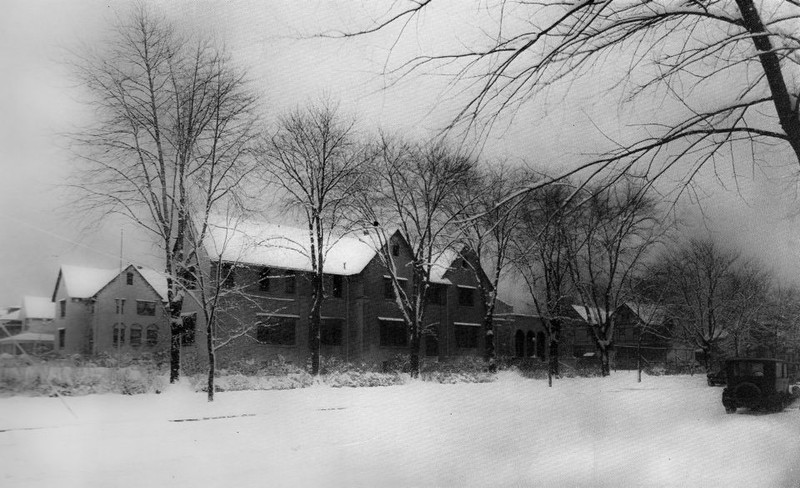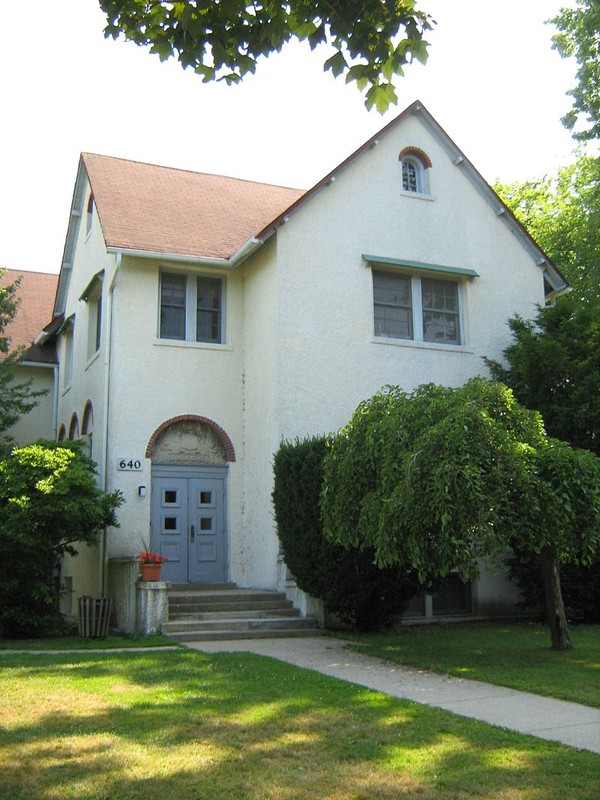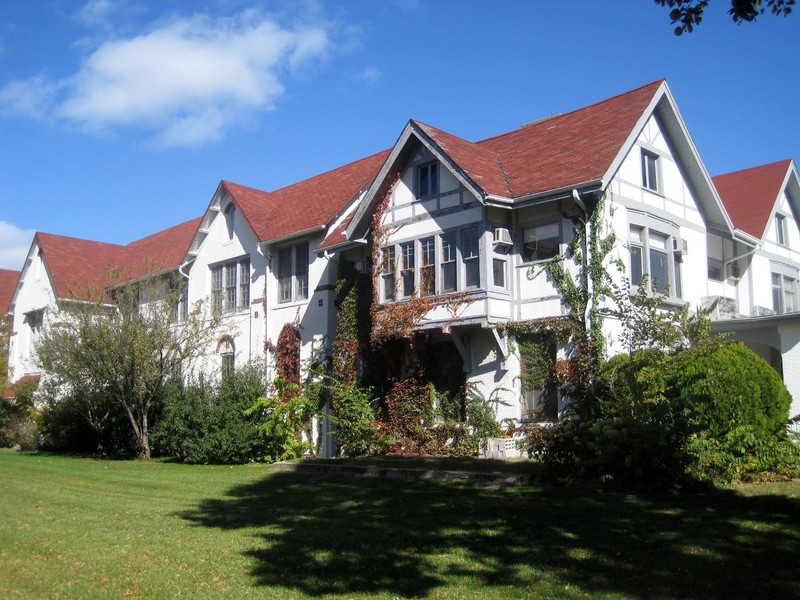Roycemore School (1915-2011)
Introduction
Text-to-speech Audio
Roycemore School in Evanston was established in 1915 by a group of affluent Evanston parents in response to dissatisfaction with the public schools and the news that the current private schools would soon be closing. The school was named in honor of the prominent nineteenth-century minister Andrew Royce who was also related to Julia Henry, one of the leaders of the effort to establish the school. In its early years, the school was open to young boys and girls but only admitted young women to the higher grades. The school and served many of the children of wealth and privilege, including the granddaughter of U.S. Steel Founder Elbert Gary for whom the city of Gary, Indiana was named. In 1968, the first young man graduated from the school. The school moved to a new location in 2011 as its lease was set to expire.
Images
1924 Picture of Roycemore School, Evanston, IL.

Front Entrance of Roycemore School, Evanston, IL. (Modern Picture)

Large View of Roycemore School, Evanston, IL. (Modern Picture)

Backstory and Context
Text-to-speech Audio
Founding Head of School Julia Henry and a group of North Shore parents opened Roycemore School in 1915 when they became concerned about the impending closure of several local private schools. The parents negotiated a 99-year lease with landowner Northwestern University. Julia Henry had previously served as the principal of the Lower School at Girton School for Girls in Winnetka, and many of the faculty and students followed her to new college preparatory. Two young women formed the first graduating class of Roycemore School in June 1917.
The school owes its name to Miss Henry’s grandfather, Andrew Royce, a well-known nineteenth-century Congregational minister in Vermont. As such, the Royce Family crest inspired the school's blue and gold colors and the motto “fortis et prudens simul,” or strength and careful judgment. The school primarily catered to the affluent and societal elites, such as the Elizabeth Campbell, the granddaughter of Judge Elbert H. Gary who was one of the founders of U.S. Steel.
The building reflects the faith in education that characterized the upper and middle classes in the Progressive Era. Many progressives believed that crowded urban living led to unhealthy lives and often attributed this to the perceived character flaws of the poor. Those who could afford the opportunity to live in the suburbs generally abandoned the grand homes in the center of the city during the early 20th century. There, they designed new homes that that allowed for plenty of windows and outdoor space. This belief in the importance of sunlight and fresh air can be seen in this building as the school's founders asked architect Lawrence Buck to make sure that the schoolrooms were would receive natural light and fresh air.
Julia Henry continued played a pivotal administrative role until she died during the 1919 influenza pandemic. Roycemore opened as a co-educational institution, but the school only admitted girls to the upper grades. By the 1930s, the school transitioned to a non-profit private school that was only open to girls. This policy change in 1962 when boys were again allowed into the school. However, it was not until 1968 for the school to graduate the first boy (in a class of five girls and one boy).
In 2011, the school moved to a new location. Today, the school enjoys a much different demographic landscape than when it was founded. As of 2018, the student body consisted of 52% boys, 48% girls and more than half its student body are non-white.
Sources
Bachrach, Julia Sniderman, "Playground Movement," Newberry Library: Encyclopedia of Chicago. Accessed May 10, 2018. http://www.encyclopedia.chicagohistory.org/pages/976.html
Hurley, Andrew. Environmental Inequalities: Class, Race, and Industrial Pollution in Gary, Indiana, 1945-1980. Chapel Hill: University of North Carolina Press, 1995.
"Nomination Form: Roycemore School." National Register of Historic Places. http://gis.hpa.state.il.us/pdfs/200923.pdf
Quinn, Patrick M. "Evanston, IL." Newberry Library: Encyclopedia of Chicago. Accessed May 10, 2018. http://www.encyclopedia.chicagohistory.org/pages/438.html
"Roycemore's History." Roycemore. Accessed May 10, 2018. https://www.roycemoreschool.org.
Photo Sources
1924 Picture: Source, Roycemore School - https://www.roycemoreschool.org/history
Front Entrance: By Zol87 from Chicago, IL, USA - Roycemore School, CC BY-SA 4.0, https://commons.wikimedia.org/w/index.php?curid=10302493
Large View, Modern Picture: By Teemu008 from Palatine, Illinois - Roycemore SchoolUploaded by AlbertHerring, CC BY-SA 2.0, https://commons.wikimedia.org/w/index.php?curid=29481329
Hurley, Andrew. Environmental Inequalities: Class, Race, and Industrial Pollution in Gary, Indiana, 1945-1980. Chapel Hill: University of North Carolina Press, 1995.
"Nomination Form: Roycemore School." National Register of Historic Places. http://gis.hpa.state.il.us/pdfs/200923.pdf
Quinn, Patrick M. "Evanston, IL." Newberry Library: Encyclopedia of Chicago. Accessed May 10, 2018. http://www.encyclopedia.chicagohistory.org/pages/438.html
"Roycemore's History." Roycemore. Accessed May 10, 2018. https://www.roycemoreschool.org.
Photo Sources
1924 Picture: Source, Roycemore School - https://www.roycemoreschool.org/history
Front Entrance: By Zol87 from Chicago, IL, USA - Roycemore School, CC BY-SA 4.0, https://commons.wikimedia.org/w/index.php?curid=10302493
Large View, Modern Picture: By Teemu008 from Palatine, Illinois - Roycemore SchoolUploaded by AlbertHerring, CC BY-SA 2.0, https://commons.wikimedia.org/w/index.php?curid=29481329
